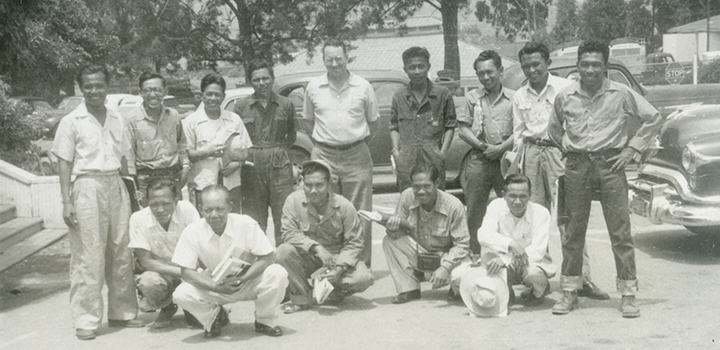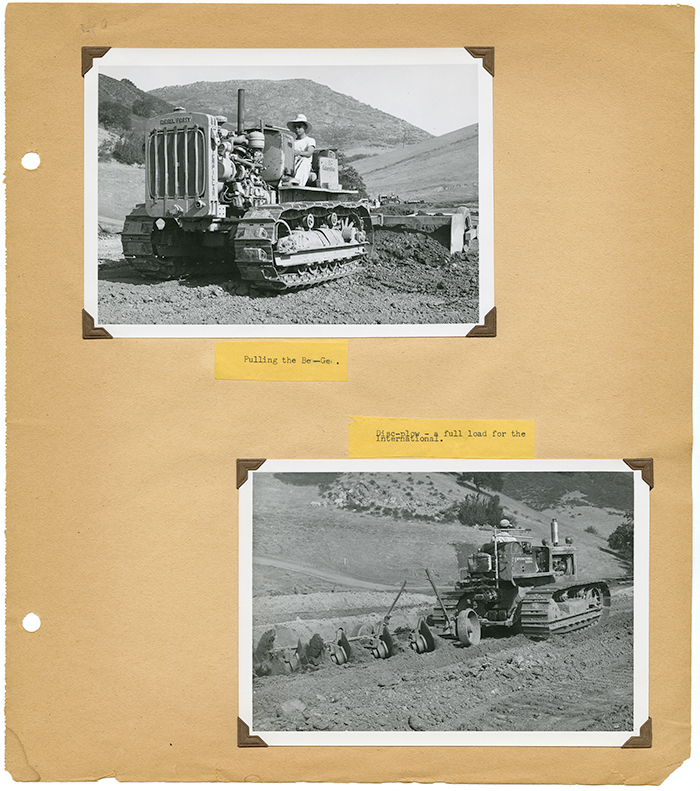Rooted in Our History

Indonesian Reservoir: A Campus Landmark
BY LAURA SORVETTI | University Archives

Click the images to view full size.
In June of 1952, 14 students arrived in San Luis Obispo for a six-month intensive course in agricultural mechanics at Cal Poly. They had traveled more than 8,000 miles to attend Cal Poly, and while their time at the university was brief, they left a mark on campus that remains today.
The 14 men, who came from Indonesia, were the first of a wave of international students to enroll at Cal Poly in the two decades after World War II, under the Point IV program. The objective of the program was to prepare the men, who worked for the Indonesian Ministry of Agriculture, to return to Indonesia as agriculture instructors.
As part of their curriculum, the men worked on a project to construct a new reservoir on campus. They surveyed, graded and constructed a reservoir at the north end of campus near the present Oppenheimer Family Equine Center, designed to capture water runoff from Horse Canyon and to receive water pumped from Middlecamp and Nelson Reservoirs in order to irrigate the Cal Poly farmland. The reservoir, named Indonesian Reservoir in recognition of their work, is one of five reservoirs on campus that supports campus agricultural operations. The water from the Indonesian Reservoir is still used today by the College of Agriculture, Food and Environmental Sciences to irrigate agricultural lands.
At the conclusion of the Point IV program, the men presented then-Dean of Agriculture Vard M. Shepard with a scrapbook, which is now part of the University Archives at the Kennedy Library. See the scrapbook in full on the library website.
Visit the Cultivate Spring 2019 Page to read more stories.
